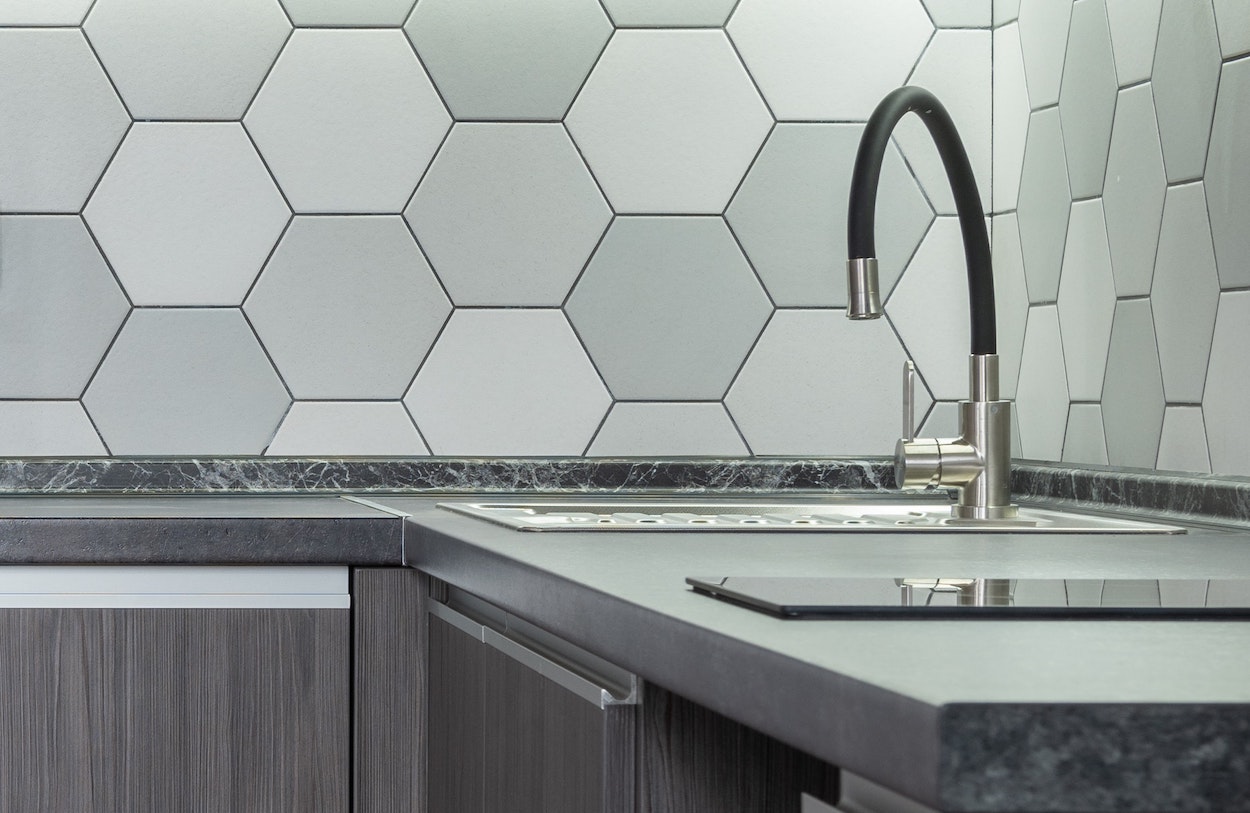How Much is a Boiling Water Tap to Buy?

A kitchen appliance that's garnering a lot of attention and fast becoming a popular choice in many homes is the boiling water tap.
The question that often arises when thinking of buying on is - how much does a boiling water tap cost?
In this post, we'll explore the cost of boiling water taps, diving into various aspects that influence the pricing.
Whether you're in the midst of planning a complete kitchen revamp or simply considering an upgrade to your current setup, this guide aims to provide you with the necessary knowledge to make an informed decision.
Click here to view our range of Instant Boiling Water Taps.
How Much is a Boiling Water Tap to Buy?
The cost of a boiling water tap can vary considerably based on a number of factors such as the brand, model, features, and even where you buy it from.
As of writing, you can expect to pay anywhere from £200 to over £1000 for a boiling water tap.
At the lower end of the price range, around £200 to £400, you can find basic models that offer the main functionality of providing instant boiling water.
These models might be from lesser-known brands, have fewer features and may not offer the same level of style and finish as the more expensive models.
They also may have smaller tanks, so they might not provide as much boiling water in one go compared to higher-end models.
Mid-range boiling water taps, costing between £400 and £700, often come from well-established brands.
They generally have larger tanks and may come with additional features like child safety locks and adjustable temperature settings.
They may also offer a more refined style and a greater variety of finishes to better match your kitchen's decor.
At the top end of the price range, between £700 and over £1000, you'll find premium boiling water taps.
These taps offer the most features and the highest levels of quality and design.
They often come from top-tier brands and might include advanced features like fine temperature control, aeration controls, or even the ability to dispense chilled and sparkling water in addition to boiling water.
They also generally have the largest tanks, allowing for more usage between refills. These models are often distinguished by a high-end look and feel, with a choice of stylish finishes to fit seamlessly into any kitchen design.
Keep in mind that these are prices for the taps themselves.
You'll also need to consider the cost of installation, which can vary depending on whether you're replacing an existing tap or installing a boiling water tap as a new addition to your kitchen.
- Related Post: How Much Does A Boiling Water Tap Cost To Run?
How Hard is it to Install an Instant Boiling Water Tap?
Installing an instant boiling water tap involves several steps and requires a certain level of plumbing and electrical knowledge. Here are the general steps involved:
- Switch Off the Mains: Before starting the installation process, it is crucial to switch off both the water and electrical mains to ensure safety.
- Remove the Existing Tap: If you are replacing an old tap with a boiling water tap, the first step would be to remove the old tap. This often involves disconnecting the water supply lines and unscrewing the tap from its mounted position.
- Position the New Tap: Once the old tap is removed, position your new boiling water tap in the desired spot and secure it. It is important to ensure that the tap is tightly fitted to prevent any water leaks.
- Install the Heating Tank: Boiling water taps come with a heating tank which needs to be installed under the sink. The tank should be securely mounted, often to the side of the cabinet to ensure it is stable.
- Connect the Water Supply: After the tank is installed, connect the water supply to the tank. This usually involves connecting the inlet hose to the cold water supply. It's important to ensure all connections are secure to prevent leaks.
- Connect the Tap to the Tank: You will then need to connect the tap to the tank, typically using a flexible hose. Again, all connections must be properly secured to prevent leaks.
- Connect to Power Supply: Once everything is connected, plug the tank into a power socket. If a socket isn't readily available under the sink, you may need to have one installed by a certified electrician.
- Test the System: Finally, turn on the water and power supplies and test the system. Check all connections for leaks and ensure that the tap dispenses hot water as expected.
While these steps provide a general idea of what is involved, it's important to note that the process can vary depending on the specific model of boiling water tap and your existing plumbing setup.
The instructions provided by the manufacturer should be followed closely.
Although it's possible for a competent DIY enthusiast to install a boiling water tap, it's generally recommended to hire a professional, especially as the process involves both water and electrical connections.
A qualified plumber and/or electrician will ensure the tap is installed correctly and safely, and can also offer a guarantee for the work.
- Related Post: How to Descale a Boiling Water Tap?
Advice from a Seasoned Kitchen Fabricator and Installer
As an experienced kitchen fitter and manufacturer, I've encountered various trends and innovative features in the world of kitchen design.
One of the most transformative additions to the modern kitchen in recent years is the instant hot water tap.
These taps provide on-demand boiling water, enhancing the kitchen's functionality, and contributing to its streamlined aesthetics.
When considering purchasing an instant hot water tap, there are several key aspects to bear in mind.
- Price Range: The cost of boiling water taps can vary greatly, depending on the brand, model, and features. You can find basic models starting at around £150, while top-end models from premium brands can cost over £1,000. The price generally reflects the tap's build quality, design, capacity, and additional features like a built-in water filter or adjustable temperature settings.
- Installation Costs: Beyond the purchase price, consider the cost of installation. These taps require both plumbing and electrical connections, so it's recommended to hire a professional for the job. Depending on the complexity of the installation and local rates, this can add an additional £100-£200 to your total cost.
- Ongoing Costs: Consider the running costs as well, such as electricity to heat the water and potential filter replacements for models with a built-in filtration system.
- Brand and Model: There are many brands available in the market, each offering a variety of models. When choosing a brand and model, consider the reputation of the brand, reviews from other customers, and the features of the specific model.
- Size and Design: These taps come in a variety of designs and finishes, so you can choose one that matches your kitchen's style. You'll also need to consider the size of the unit and ensure it fits in your desired location.
- Capacity: Boiling water taps come with a tank that holds and heats the water. The tank's capacity can vary, so consider your needs and choose a model that can accommodate them.
- Energy Efficiency: Look for a model that is energy-efficient to save on running costs. Some models come with an eco-mode or have excellent insulation to keep the water hot without using too much energy.
- After-sales Service: Check the warranty period and what it covers. A longer warranty period is generally indicative of the manufacturer's confidence in their product's durability. Also, consider the brand's customer service reputation.
Overall, an instant hot water tap can be a valuable addition to your kitchen, providing convenience and adding a sleek, modern touch.
Final Notes On How Much a Boiling Water Tap is to Buy
Buying a boiling water tap can indeed be a significant investment, with costs varying widely depending on the brand, model, and additional features.
However, it's important to remember that you're not just paying for a tap; you're investing in a blend of convenience, time efficiency, modern aesthetics, and potentially even energy savings.
It's crucial to note that while the initial outlay may seem steep, especially for high-end models, the long-term benefits can make it a worthwhile addition to your kitchen.
With time saved from not having to wait for water to boil for cooking or making hot beverages, combined with the energy efficiency that some models offer, a boiling water tap can turn out to be a cost-effective investment over time.
Whether you're redesigning your entire kitchen or simply upgrading your fixtures, I hope this guide has provided you with a clearer understanding of the costs involved in purchasing a boiling water tap, and the factors to consider when choosing the right model for your needs.

